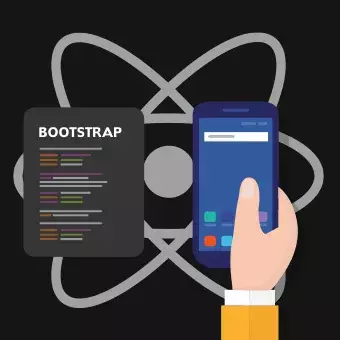Introduction
Form validation plays a crucial role in enhancing user experience.
A user’s interaction with a web application often begins with a form, be it signing up, logging in, or submitting information. Ensuring data integrity and feedback are pivotal.
Enter React Hook Forms, a game-changer in the world of React applications, promising efficient validation with a minimal footprint.
Why Choose React Hook Forms?
Web developers have long grappled with the complexities of form validation. Challenges like handling different data types, providing timely feedback, and ensuring cross-browser compatibility can be daunting. Traditional methods, while effective, often entail writing extensive boilerplate code. React Hook Forms, on the other hand, offers a refreshing alternative.
Compared to other form libraries like Formik, React Hook Forms stands out with its simplicity and effectiveness. It allows for easy configuration, negating the need for excessive event handlers such as onSubmit, onChange, and onBlur. The library also integrates effortlessly with existing React projects, reducing the learning curve for developers.
Key Features of React Hook Forms
React Hook Forms boasts several compelling features that make it the go-to choice for many:
Looking for a React Agency?
Lightweight and Dependency-Free
One of the standout traits of React Hook Forms is its compact size. Without the bloat of dependencies, it ensures that web applications remain fast and responsive. For businesses, this translates to better user retention and lower bounce rates.
Intuitive API
Developers often praise the library for its straightforward API. It offers a seamless experience, enabling rapid development without compromising on functionality. The hook-based approach aligns perfectly with modern React practices, ensuring that the code remains clean and maintainable.
Efficient Validation and Error Handling
React Hook Forms excels in its primary mission: validation. With a constraint-based validation API, it leverages existing HTML markup to validate forms. This method not only simplifies the validation process but also guarantees accuracy.
Keep Fit with React Hook Forms
Earlier this year our agency was approached by a local fitness centre in Leeds, UK. They were keen on developing an online booking system for their diverse range of classes – from yoga and pilates to high-intensity interval training.
The challenge was in the details. Each class type had distinct attributes, from equipment requirements to participant limits. And with multiple instructors, venues, and timings, ensuring a flawless user experience was paramount.
Thanks to React Hook Forms we were able to quickly set up the booking forms, tailoring the validations to each class type. For example, validating available slots for a spacious aerobics hall was quite different from a limited-capacity spinning studio.
The end result? A streamlined booking experience that members loved. The client reported fewer booking errors and a noticeable uptick in class sign-ups. It’s experiences like these that underline the practical benefits of tools like React Hook Forms in real-world scenarios.
Getting Started with React Hook Forms
Embracing React Hook Forms in your projects is a straightforward process, and here’s a step-by-step guide to help you get started:
Installation
Begin by adding React Hook Forms to your project. If you’re using npm, you can run:
npm install react-hook-form
Alternatively, for yarn users:
yarn add react-hook-form
Setting Up A Basic Form
Once installed, you can quickly set up a form using the useForm hook. This hook provides a variety of methods, such as register (to register an input) and handleSubmit (to handle form submission).
import { useForm } from 'react-hook-form';
function App() {
const { register, handleSubmit } = useForm();
const onSubmit = data => console.log(data);
return (
<form onSubmit={handleSubmit(onSubmit)}>
<input name="example" ref={register} />
<button type="submit">Submit</button>
</form>
);
}Validation
React Hook Forms shines with its validation capabilities. Using the register function, you can easily specify validation rules for your input fields.
<input name="age" ref={register({ required: true, min: 18 })} />In the example above, the age input is required and must be at least 18.
Error Handling
Displaying errors is also a breeze. The useForm hook provides an errors object that contains information about input validation errors.
{errors.age && <p>Age is required and must be at least 18.</p>}
Documentation and Community
One of React Hook Forms’ strengths is its robust documentation.
Whether you’re looking to integrate with other libraries or seeking advanced use-cases, the official documentation has you covered. Furthermore, the active community surrounding React Hook Forms means you can often find solutions or advice on platforms like StackOverflow or GitHub.
By following these steps and diving into the resources available, developers can quickly harness the power of React Hook Forms, creating efficient and user-friendly web applications.



